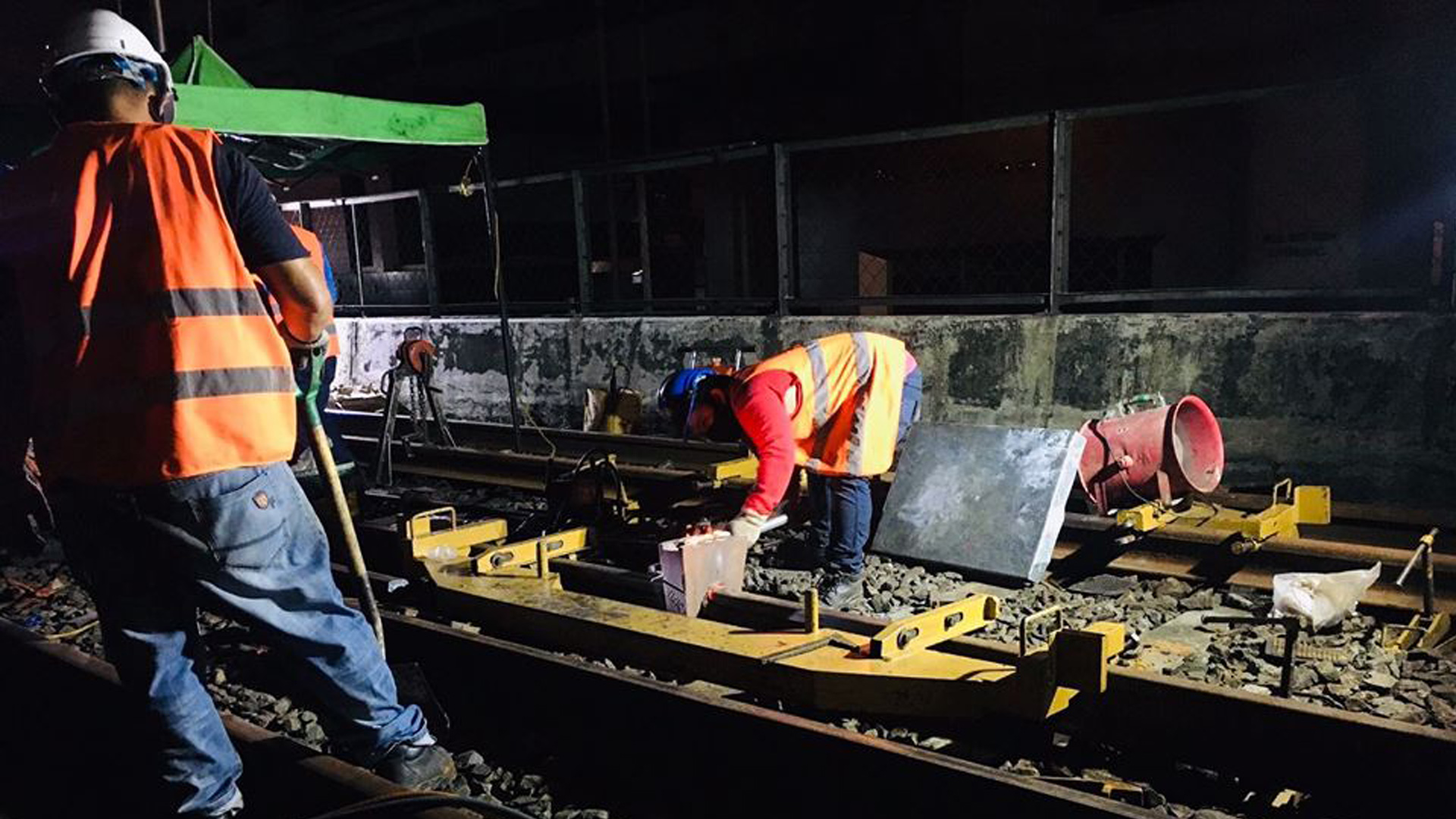The Metro Rail Transit Line 3 (MRT-3) eyes completion of all its rail replacement activities by September this year, several months ahead of its February 2021 target date, to increase its train speed up to 60 kph.
This, after the rail line has fast tracked its rehabilitation works amid the implementation of the enhanced community quarantine (ECQ) in Luzon.
“Buhos trabaho tayo sa paglatag ng mga bagong riles. Ang sabi po ng mga kontratista natin, we are on time sa paglatag ng bagong riles. In fact, noong huling pulong ko sa kanila, sinabi nilang pipilitin nilang tapusin sa buwan ng Setyembre, higit na maaga kaysa sa orihinal na scheduled
completion nito sa February 2021. Tinututukan po natin ito upang lalong mapabilis, ng sa gayon ay mapakinabangan na ng ating mga kababayan,” Department of Transportation Secretary Arthur P. Tugade stressed in a virtual press briefing last April 30.
Rail replacement works were previously done from 11 PM to 4 AM only, or during the non-operating hours of the MRT-3 line. Since resumption of rail replacement works was approved by the Inter-Agency Task Force (IATF) last April 6, working hours were extended from 7 PM to 5 AM.

With this, the MRT-3 management expects all rail replacement works to be completed as early as September 30, 2020.
At present, 36,540 linear meters out of 65,892 linear meters of rail have been replaced (55.45%), out of which 5,616 linear meters were replaced during ECQ.
The installation of six (6) pieces of LWRs from the GMA-Kamuning Station to the Araneta-Cubao Station (Southbound) was finished last April 15, while 14 LWRs were completely installed from the Araneta-Cubao Station to the Santolan-Annapolis Station (Southbound) last April 23.
Rail replacement works from the Santolan-Annapolis Station to the Ortigas Station have started on May 2.
After completion of rail replacement activities, the MRT-3 will also conduct a system check on October 2020. This is to test the alignment of tracks, Overhead Catenary System (OCS), and even the signalling and communications systems of the mainline.
MRT-3 trains speed up to 60 KPH by December
Once all rail replacement activities are completed, the operating speed of MRT-3’s trains are expected to increase gradually, from the current 30 kph, to 40 kph by October, 50 kph by November, and 60 kph by December.
The increased speed will translate to a lower headway, or waiting time between trains, from the current 8.5 minutes down to 3.5 minutes. Together, with the increase in operational trains from the current 15 up to 20, MRT-3’s capacity is expected to double from the current 300,000 to 600,000 passengers per day.
The rail replacement is also intended to reduce vibration-caused breakdowns, increased reliability of the rail system, and lesser passenger delays.
Aside from the rail replacement activities, the comprehensive rehab works under Sumitomo-MHI-TESP, also includes general overhaul of all 72 Light Rail Vehicles (LRVs) of the MRT-3, rehabilitation of power and overhead catenary systems (OCS), upgrade of the signalling system, communications and CCTV systems, repair of all MRT-3’s escalators and elevators, among other system repairs and improvements.
Photo Source: Facebook/DOTrPH







